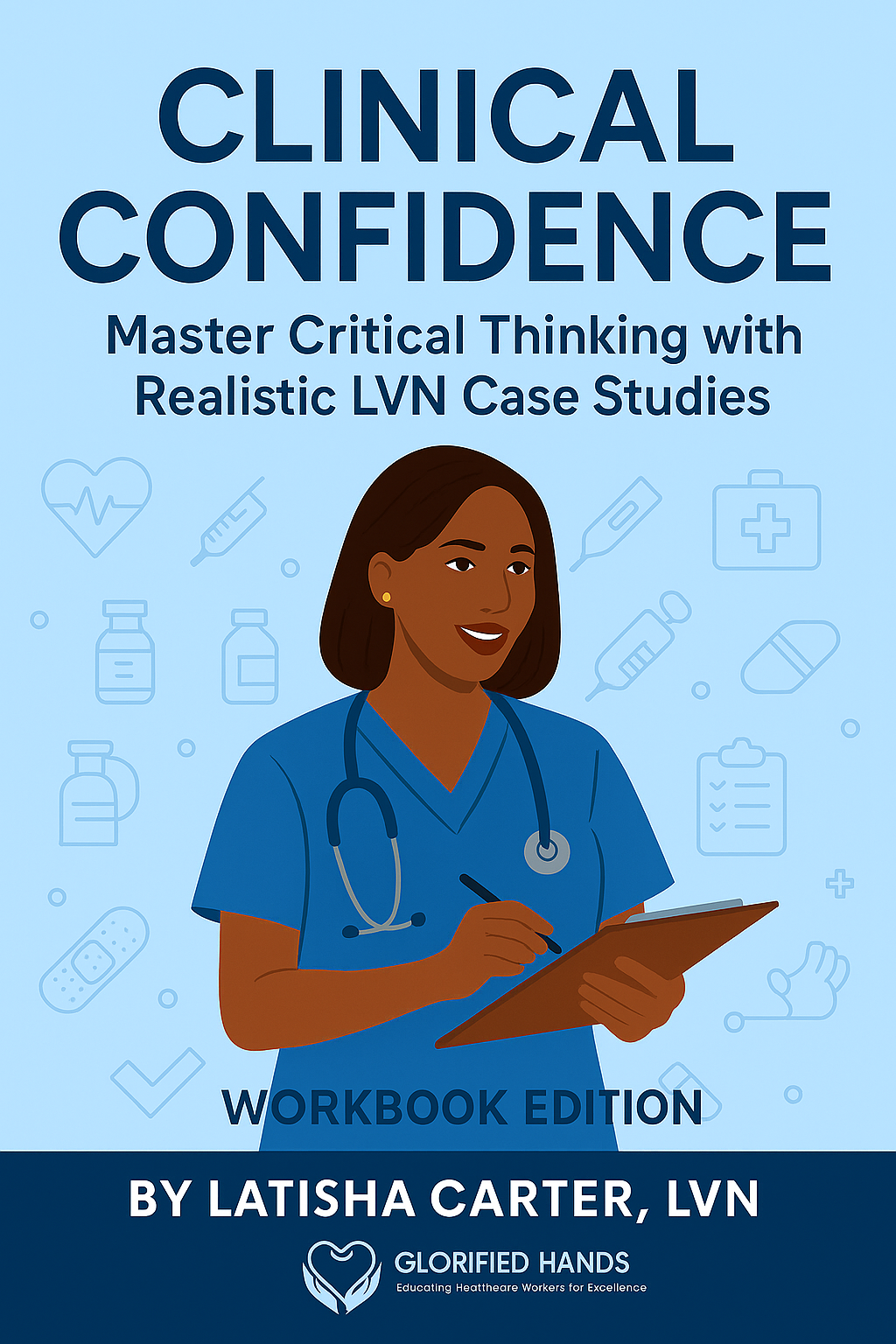$15.00
Clinical Confidence: Master Critical Thinking with Realistic LVN Case Studies – Workbook Edition is designed as a hands-on companion to strengthen the clinical judgment, decision-making, and problem-solving skills of Licensed Vocational Nurses.
This workbook provides 15+ realistic case studies, each carefully developed to mirror the challenges LVNs encounter in hospitals, long-term care, and home health. Nurses are guided through patient profiles, scenarios, and thought-provoking questions with dedicated space for answers and reflection.
By working through these exercises, LVNs will:
- Practice real-world critical thinking before applying it at the bedside.
- Build confidence in assessing patients, prioritizing care, and implementing safe interventions.
- Learn to navigate cultural differences, communication barriers, and complex clinical situations.
- Strengthen documentation skills and clinical reasoning for better patient outcomes.
Whether used for self-study, classroom learning, or professional training, this workbook empowers LVNs to sharpen their skills and gain confidence in the fast-paced clinical setting.
DETAILS
Workbook Example
Chapter 2
Nursing Process Refresher
The nursing process is the foundation of all nursing care. It provides a systematic, evidence based method for identifying patient needs, planning care, carrying out interventions, and evaluating outcomes.
As an LVN, you contribute to every step of the process, even though you may not make nursing diagnoses independently.
The 5 Steps of the Nursing Process
Step
Assessment
Diagnosis
Planning
What It Involves
Collecting data: vitals, history,
physical observations
RN identifies nursing diagnoses
Setting goals and priorities
Implementation Carrying out interventions
Evaluation
Determining if goals are met
LVN Role
Measure vitals, focused assessments,
report changes
Provide supporting data
Offer realistic interventions
Administer meds, provide care,
reinforce teaching
Observe outcomes, document progress
Importance for LVNs
• Consistency: Following the process ensures no step is skipped.
• Teamwork: Helps you communicate effectively with RNs, who rely on your accurate
data.
• Patient Safety: Early recognition of changes allows timely interventions.
• Legal Protection: Demonstrates that you are following standards of nursing practice.
Planning & Prioritization in Action
When planning care, think about what needs to be done first and what can wait. Use tools like:
• Maslow’s Hierarchy of Needs (Physiological → Safety → Love/Belonging → Esteem → Self-Actualization)
• ABCs (Airway, Breathing, Circulation)
Visual Aid – Nursing Process Cycle
[Assessment] → [Diagnosis] → [Planning] → [Implementation] → [Evaluation] → (Back to Assessment if needed)
This continuous loop reminds you that nursing care is ongoing and dynamic.
Tip: Always prioritize ABCs (Airway, Breathing, Circulation) and Maslow’s Hierarchy of Needs.
